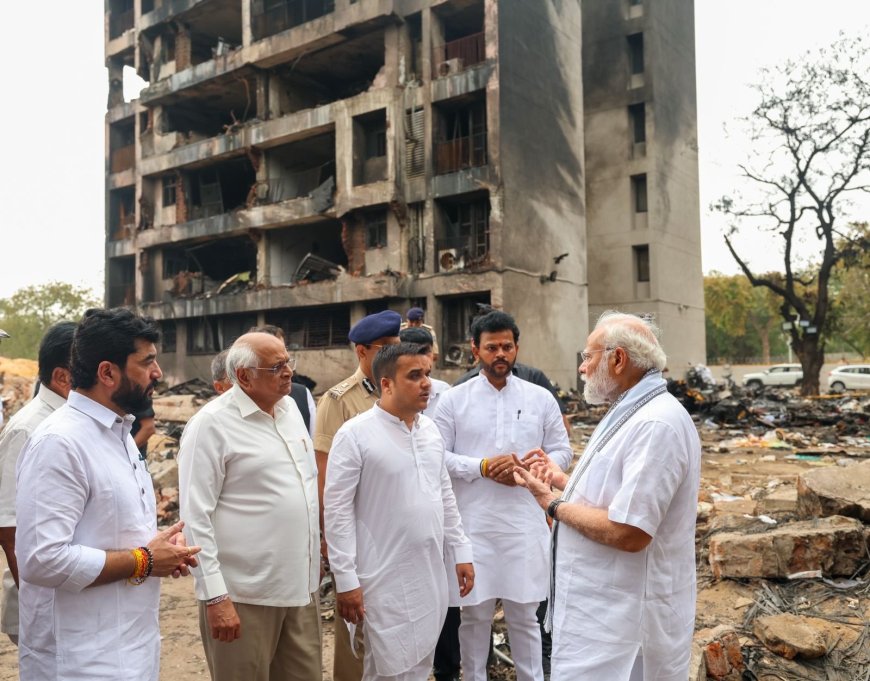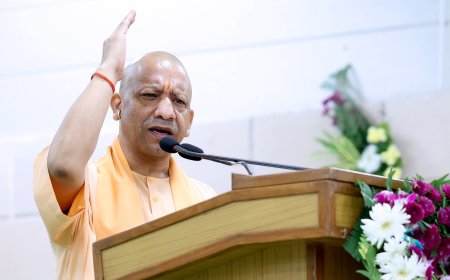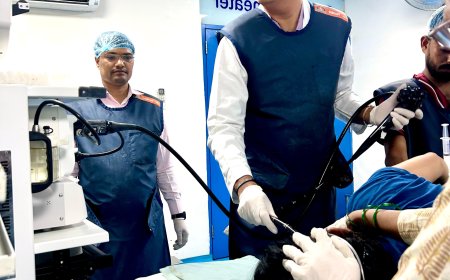Skyfall in Ahmedabad: When Will India’s Aviation Wake Up?
Skyfall in Ahmedabad: When Will India’s Aviation Wake Up?

On June 12, 2025, Air India Flight AI171, a Boeing 787-8 Dreamliner bound for London, crashed moments after takeoff from Sardar Vallabhbhai Patel International Airport in Ahmedabad, Gujarat, killing 241 of the 242 passengers and crew onboard and at least 29 people on the ground. This catastrophe, India’s deadliest aviation disaster since 1996, has reignited a long-standing debate: why do aviation disasters continue to plague India, and why have decades of tragedies failed to translate into lasting safety reforms? Despite advancements in technology and global aviation standards, systemic failures in infrastructure, oversight, training, and accountability persist, exposing a troubling pattern of unlearned lessons.
The Ahmedabad crash, the first fatal incident involving a Boeing 787 Dreamliner, unfolded in less than a minute. CCTV footage showed the plane struggling to gain altitude, reaching just 625 feet before descending with its landing gear still extended, crashing into a medical college hostel. Investigators, led by India’s Aircraft Accident Investigation Bureau (AAIB) with support from the U.S. National Transportation Safety Board, are probing multiple factors, including engine thrust, wing flap configuration, and maintenance lapses. A recovered flight data recorder may provide clues, but early speculation points to a possible loss of thrust or a stall, potentially exacerbated by human error or mechanical failure.
India’s aviation history is scarred by over 95 major accidents, ranking it among Asia’s highest alongside Indonesia. Notable disasters include the 2010 Air India Express crash in Mangalore (158 deaths), the 2020 Kozhikode runway overrun (21 deaths), and the 1985 Air India Flight 182 bombing (329 deaths). Each incident prompted investigations and recommendations, yet recurring issues—pilot error, inadequate infrastructure, and lax regulatory enforcement—continue to surface. The 2025 Ahmedabad crash bears eerie similarities to the 1988 Indian Airlines Flight 113 crash near the same airport, where poor visibility and navigational errors led to 133 deaths, raising questions about whether local conditions, like bird strikes or weather, remain unaddressed.
Aviation experts point to systemic flaws that perpetuate this cycle. India’s aviation sector, now the world’s third-largest domestic market, has grown rapidly, with airlines like Air India and IndiGo expanding fleets and routes. However, regulatory oversight by the Directorate General of Civil Aviation (DGCA) struggles to keep pace. Former pilot Amit Singh told NPR that a lack of trust between regulators and operators fosters a weak safety culture, where issues are often concealed rather than addressed. “People in the safety industry were not surprised,” Singh said of the Ahmedabad crash, citing “precursors” like minor incidents that go ignored until a major disaster strikes.
Pilot training and fatigue are persistent concerns. The Ahmedabad flight’s captain, with 8,200 hours of experience, was highly qualified, yet human error remains a leading cause of crashes in India. Posts highlight a “lack of discipline” among pilots and engineers, driven by fear of punishment, which discourages honest reporting. Inadequate simulator training for modern aircraft, as seen in the 1990 Bangalore Airbus A320 crash (92 deaths), continues to haunt the industry. Overworked pilots, pressured by tight schedules, face fatigue, a factor implicated in multiple incidents.
Infrastructure deficiencies exacerbate risks. Ahmedabad airport, notorious for bird strikes, reported a 35% increase in such incidents from 2021 to 2023, yet mitigation measures like habitat management remain inconsistent. Tabletop runways, like those in Kozhikode and Mangalore, pose unique challenges, requiring precise navigation that aging equipment or poor visibility can undermine. The 2025 crash’s proximity to residential areas underscores another issue: urban encroachment around airports, increasing the risk of ground casualties.
Maintenance lapses also loom large. Air India’s fleet, including the 11-year-old Dreamliner involved in the crash, has faced criticism for outdated maintenance practices. Under Tata Group ownership since 2022, Air India has invested in fleet modernization, but 27 of its 198 planes are 10–15 years old, and 43 exceed 15 years. The DGCA’s post-crash mandate for additional checks on Air India’s 787 fleet suggests prior oversight gaps. Boeing’s own safety concerns, including whistleblower allegations of 787 manufacturing flaws, add complexity, though no direct link to the crash has been confirmed.
The most damning critique is the failure to implement past recommendations. After the 2010 Mangalore crash, a court of inquiry called for better runway safety areas and pilot training, yet the 2020 Kozhikode incident revealed similar shortcomings. Aviation analyst Mohan Ranganathan accused India’s aviation watchdog of issuing licenses without rigorous checks, warning that “Mumbai is a time bomb waiting to happen” due to its densely populated surroundings.
As India aspires to become a global aviation hub under Prime Minister Narendra Modi’s ambitious airport expansion, the Ahmedabad tragedy is a stark reminder of the cost of complacency.
What's Your Reaction?













































